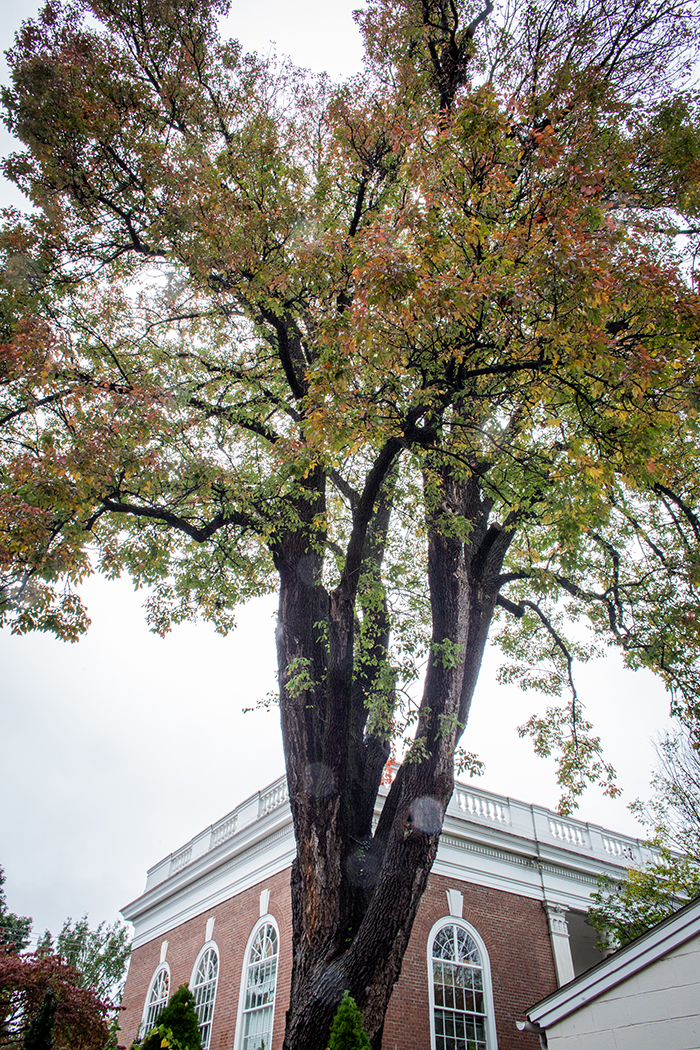Charlottesville wouldn’t be Charlottesville without its trees. When the city adopted a Tree Conservation Ordinance in 2013 to allow special protected status for certain trees, it was an acknowledgment of all their many benefits: beauty, history, a sense of place, and all the “ecosystem services” that trees provide for free. They cool the air and make oxygen; they filter water and hold soil in place. They’re the quiet heroes of the city.
The ordinance has previously been used to protect only 11 trees, but in early April, City Council used it to designate six more—individuals, all on public land, that are now protected from removal unless council specifically authorizes it.
“These were obvious trees to designate,” says Brian Menard, chair of the city’s Tree Commission, which worked with the Charlottesville Tree Stewards, a volunteer group, to make nominations. “Five of the six were specimen trees”—that is, protected because of their outstanding size and quality—“and that was for a reason, to showcase the best of the species.”
One of these, an American elm, stands outside Clark Elementary School in Belmont. It anchors the top of a steep bank that separates the schoolyard from Monticello Avenue, and it’s regularly treated by the city against Dutch Elm Disease. In the materials prepared by the Tree Commission, a photo shows a group of young students lining up with their teachers under the elm’s generous shade. Maybe some of the kids looked up into the canopy as they gathered there, or maybe not. Whether they noticed it or not, the tree set the stage for that moment in time.
Another is a bur-post oak with a trunk five feet across in the center of Maplewood Cemetery. Menard knows it well, since he lives near the cemetery and has, he says, “spent many hours under it.” In Riverview Park, a sycamore along the trail sprouted naturally on the riverbank, as sycamores do, and is now 65 feet tall, one of the largest in the park.
At the north end of Oakwood Cemetery, a Southern red oak earned specimen status in part for its 80-foot crown spread—a truly resplendent reach that creates, for anyone standing underneath it, a sort of magical outdoor room. The oak, with so many souls interred beneath it, feels as though it ties different eras of Charlottesville history together. Two headstones, dated 1876 and 1898, seem to mark graves that are actually underneath the tree’s titanic base. Leaves whisper and wave throughout its whole muscular, elbowed structure.
You can get close to the white ash behind the Charlottesville-Albemarle Historical Society, too, if you walk into the diminutive brick-walled garden at the building’s rear entrance. Right up next to the tree’s base, you can examine its bark—deep, close-set ridges that seem almost frosted, white on sepia, perhaps giving the species its name. But even if you don’t have time to really commune with the tree—if you’re hurrying past the Central Library, or through Market Street Park—you can see the ash; it’s a giant that’s visible all around the block. The sixth tree is harder to visit; it stands within the loop of an off-ramp from the 250 Bypass onto Rugby Road, so you’re more likely to see it while speeding past in your car. It’s a Shumard oak that is now officially a Memorial Tree, honoring Leroy Snow of Snow’s Garden Center.
Look for more trees to be designated in the future, Menard says. “This is certainly not the last batch,” he says, adding that citizens can nominate trees, too. “The more we designate, the more we call attention to the overall importance of trees.”








